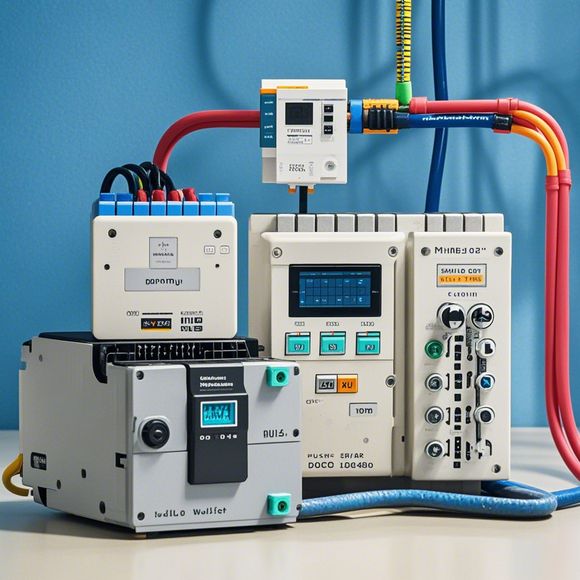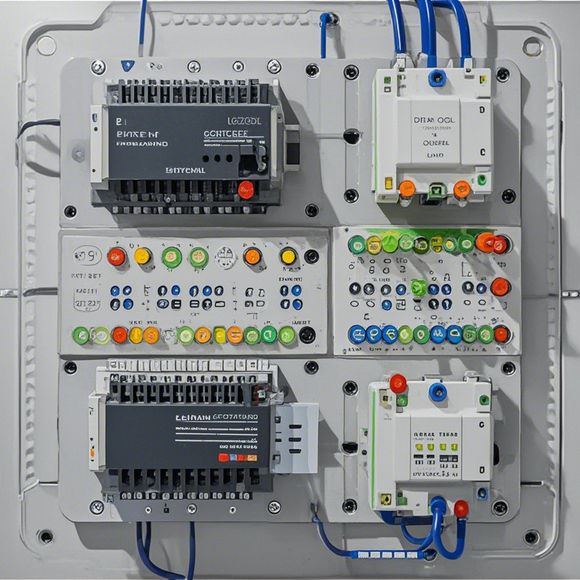Overview of PID Controllers in Modern Automation
In modern automation, PID (Proportional-Integral-Derivative) controllers play a crucial role. These controllers adjust the system's performance based on inputs and outputs to maintain a desired state. They are designed to respond quickly to changes in the system, making them ideal for applications that require precise control. PID controllers are used in various industries, including manufacturing, healthcare, and transportation, among others. They help to optimize systems by minimizing errors and ensuring that the desired results are achieved. In addition, PID controllers can be customized to suit specific needs and preferences, making them an essential tool for achieving optimal performance and efficiency in modern automation.
Introduction to PID Controllers:
PID controllers, or Proportional-Integral-Derivative controllers, are a cornerstone of modern industrial automation systems. They are designed to maintain a stable system performance and respond dynamically to changes in the process variables. These controllers have become an essential tool for many industries, from manufacturing to healthcare, due to their ability to provide precise control and reliable performance.
Key Features of PID Controllers:

1、Proportional (Kp) Control: This component of the PID algorithm measures how much the output has changed relative to a desired value. If the output is too low or too high compared to the setpoint, Kp will increase the output signal until it reaches the desired level. This ensures that the output stays within a specified range.
2、Integral (Ki) Control: This component calculates the integral of the error over time. It helps to smooth out sudden changes in the system by adding them up and adjusting the output accordingly. Ki can help reduce the amount of overshoot caused by a rapid change in the process variables.
3、Derivative (Kd) Control: This component measures the rate of change of the error with respect to time. Kd can help detect situations where there is a sudden disturbance in the process variables. By reacting quickly, Kd can prevent the system from oscillating around the setpoint and maintaining a stable performance.
4、Tunability: PID controllers can be tuned using various techniques such as proportional gain (Kp), integral gain (Ki), and derivative gain (Kd). This allows for customization to meet specific requirements, such as reducing overshoot or increasing stability.
5、Robustness: PID controllers have been extensively tested and proven to work well in a wide range of operating conditions. They are particularly effective in handling processes with varying noise levels and disturbances.
6、Simplicity: Despite its complexity, PID controllers are easy to implement and understand. They require only three parameters: Kp, Ki, and Kd, which can be adjusted according to the needs of a particular application.
Applications of PID Controllers:

1、Process Control: PID controllers are commonly used in chemical processing plants to regulate temperature, pressure, flow rates, and other process variables. They help to maintain a consistent and safe environment for the production process.
2、Quality Control: In food and beverage industries, PID controllers are used to ensure product consistency and quality. For example, they can be used in breweries to control temperature and pressure settings to produce consistent beer batches.
3、Manufacturing: In manufacturing industries, PID controllers are crucial for ensuring that machines and production lines operate smoothly and accurately. They help to prevent downtime and reduce wasteful production.
4、Healthcare: PID controllers are also used in the medical field, particularly in surgical robotics and implant devices. They help to minimize errors during surgery and ensure accurate positioning of implants.
5、Energy Systems: In power generation and renewable energy systems, PID controllers are used to regulate the output of generators and other energy conversion equipment, helping to maintain stable power supply and reduce fuel costs.
6、Transportation: In transportation systems, PID controllers are essential for controlling speed and acceleration on roads and highways. They help to ensure safety and efficiency on busy commutes.
7、Agriculture: In agriculture, PID controllers are used in greenhouse heating and lighting systems to regulate temperature and humidity levels. This helps to maximize crop growth while minimizing energy waste.

8、Renewable Energy Systems: In solar power systems, PID controllers are used to regulate the voltage and current output of solar panels, helping to maximize power generation and reduce losses.
Conclusion:
In conclusion, PID controllers play an essential role in modern industrial automation systems by providing precise control over process variables and ensuring reliable performance. Their tunable nature, robustness, simplicity, and extensive applications across various industries make them a valuable tool for anyone looking to optimize their manufacturing operations and improve overall productivity.
Content expansion reading:
Articles related to the knowledge points of this article:
The cost of a PLC Controller: A Comprehensive Analysis
Plumbers Rule! The Role of PLC Controllers in the World of Waterworks
Connecting a PLC Controller to Your Computer
PLC Controllers: A Comprehensive Guide to Understanding Their Prices